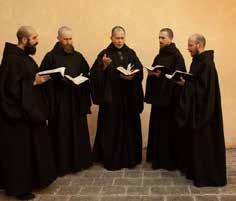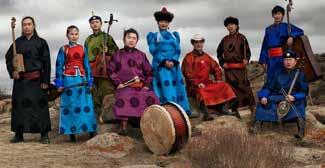
1 minute read
Locusts in Africa
Music is a lot of THINGS!
So we thought that music was a lot about instruments and video and things? Let us look at something else. Weird examples really!
Advertisement

Gregorian chant
Wiki says: “Gregorian chant is the central tradition of Western plainchant, a form of monophonic, unaccompanied sacred song in Latin (and occasionally Greek) of the Roman Catholic Church. Gregorian chant developed mainly in western and central Europe during the 9th and 10th centuries.
Gregorian melodies are traditionally written using neumes, an early form of musical notation from which the modern four-line and five-line staff developed.
Gregorian chant was traditionally sung by choirs of men and boys in churches, or by men and women of religious orders in their chapels.
Although Gregorian chant is no longer obligatory, the Roman Catholic Church still officially considers it the music most suitable for worship. During the 20th century, Gregorian chant underwent a musicological and popular resurgence.
Inuit Throat singing
This not rap!
Says wiki: “nuit throat singing, or katajjaq, is a form of musical performance uniquely found among the Inuit. The traditional form consists of two women who sing duets in a close face-to-face formation with no instrumental accompaniment, in an entertaining contest to see who can outlast the other.
However, one of the genre’s most famous practitioners, Tanya Tagaq, performs as a solo artist. Several groups, including Tudjaat, The Jerry Cans, Quantum Tangle and Silla + Rise, also now blend traditional throat singing with mainstream musical genres such as pop, folk, rock and dance music.
An analogous form called rekuhkara was once practiced among the Ainu of Hokkaidō, Japan
Oh, by the way: throat singing is not only Inuit!
It is thought that the art of overtone singing originated in southwestern Mongolia in today’s Khovd Province and Govi Altai region.
Nowadays, overtone singing is found throughout the country and Mongolia is often considered the most active center of overtone singing in the world. The most commonly practiced style, Khöömii (written in Mongolian Cyrillic).
So we are into Siberia?











